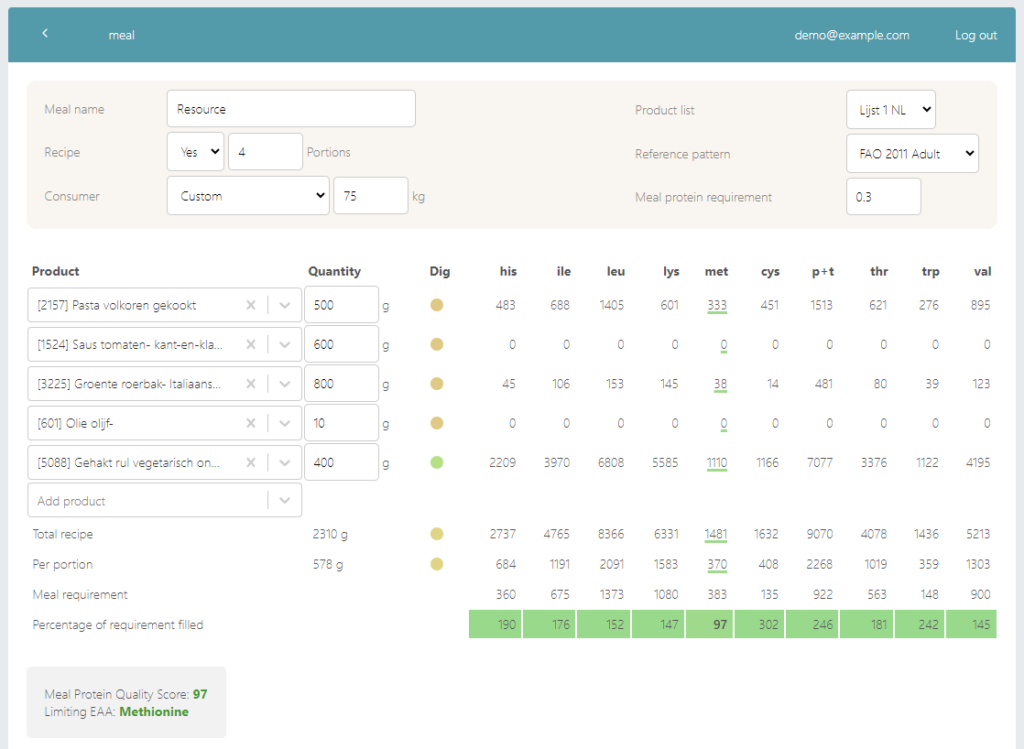Pol Grootswagers, assistant professor of Nutrition and Aging, and his team developed a tool to involve older people in the protein transition. ‘The Alpha tool helps put together meals that are complete in terms of amino acids. That ensures the quality of plant-based meals.’
The tool shows the amounts of each essential amino acid per ingredient of any specific meal and also shows percentages to indicate how this relates to protein needs. ‘This enables you to rapidly assess where there are deficiencies and how you can supplement your protein intake,’ Grootswagers clarifies.
Muscle mass
‘Older people’s diet requires special attention because muscle mass and bone density are reduced with age. This effect is compounded if insufficient proteins are consumed’, according to Grootswagers. ‘A plant-based diet had two additional points of attention: the amino acid profile of plant-based proteins is often less complete, and the proteins are not absorbed as well. To ensure the elderly can safely follow a plant-based diet, these factors must be considered.’
(Story continues below)

‘According to some nutrition experts, the elderly should eat mainly animal-based proteins because of these risks, but, in view of the environmental impact the production of animal proteins has, this position is hardly justified. Everyone must contribute to the protein transition, and the elderly in particular, especially considering the fact that this demographic is increasing in size. We must be able to put together plant-based meals that meet the protein requirements and contain a complete amino acid profile.’
Less is more
Although the tool targets the elderly, dieticians, chefs, and researchers also use it. ‘To date, these people lacked access to data on digestibility and amino acid composition, which are needed to design proper meal combinations. With an increase in the number of consumers who eat plant-based, this knowledge is highly relevant.’
The Alpha tool uses data obtained from the NEVO nutritional value tables and the FAO’s guidelines for protein requirements. A user enters the ingredients and the amounts per ingredient. ‘That’s when the puzzling starts, with, for example, a few more nuts, legumes or seeds to reach 100 per cent. The tool also has a reversed function: if a meal meets 100 per cent of the amino acid requirements, ingredients can be reduced. Reducing consumption is also a sustainable choice.’
Culinary sound
Eventually, the Alpha tool will also provide recommendations using AI. ‘That functionality is still under development. We must first teach the algorithm what logical, culinary sound combinations are. At present, the tool may still provide suggestions with a perfect protein quality, but which are absurd in a culinary sense.’



